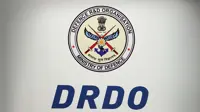CRISIL releases default and transition study, 2006
12 Apr 2006

For instance, CRISIL's 3-year average cumulative default rate for ratings in the 'AA' category works out to 1.45 per cent for the 1992-2005 period, but has been much lower at 0.59 per cent between 2000 and 2005. The fact that the data used for this study covers a period of weakened credit quality (1995-1999) as well as a period of improving credit quality (2000-2005) reinforces the credibility and utility of the conclusions drawn.
Over the years, CRISIL ratings have emerged as reliable measures of default probability as they have high calibration accuracy, with higher ratings implying a lower likelihood of default. At 84 per cent, the high stability rates of CRISIL's ratings have compared favourably with those of international rating agencies.
Similarly, CRISIL's ratings have strongly demonstrated their default prediction ability over the 14 years covered in the study, reflected in a high Gini coefficient of 0.80..
According to Roopa Kudva, executive director and chief rating officer, CRISIL, "For the first time, CRISIL has provided industry-wise and year-wise classification of defaults by CRISIL-rated entities. This will provide additional, valuable information to market participants and enable finer pricing of debt."
Incidentally, CRISIL is the only rating agency in India to have published default statistics covering a period of ten years, a key requirement of Basel II.


.webp)

.webp)



















